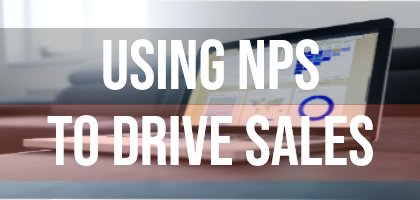Most marketers think that growth is all about user acquisition, but the truth is that user retention plays a more important role in the growth cycle. You’ve worked hard to capture a potential customer’s email through lead magnets, content upgrades, and creating amazing content. The user enters your funnel and might even take out their credit card to give your app a try. Now it’s up to you to ensure that the user continues to stay as a long term customer. Instead of focusing on acquiring new users, you have to figure out your best retention practices.
Managing your user retention rate is an incredibly important part of growing a sustainable business. A delighted customer goes a long way. It leads to more referrals and account upgrades. One of the hardest things that marketers have to figure out is how to keep users engaged with the product.
I would argue that the first thing you need to do is ensure that you’ve built an excellent product that users love. In addition to that, you should ensure that your product actually solves a pain point or your product can help their business grow. This doesn’t happen overnight. No individual can build the best product overnight. It takes a lot of time and tweaks to ensure that the product is as good as it can get. Here are some strategies that you can use to improve your user retention rate.
TL;DR: Video is at the bottom 🙂
Why User Retention?
According to a research report by HBR,
“Increasing customer retention rates by 5% increases profits by 25% to 95%”.
From that research report with many more case studies from leading startups, we can conclude that:
- It costs a lot more to acquire a new customer than it does to retain one.
- A happy customer is more likely to stick around longer and that also means that they’re going to be spending more money with you.
- A retained happy customer is more likely to refer you to their friends and co-workers, which lowers your cost of growth.
- A good user retention rate will also mean that your customer life time value will be much higher as well.
- Your company’s overall profit and revenue will be increased due to a good user retention rate.
This is especially important for SaaS companies that want to keep their Monthly Recurring Revenue up. User retention will also mean that you will have a lower churn rate. So let’s review some of the best retention practices, instead of only focusing on user acquisition.
1. Listening to your customers
Listening to your customers is a requirement for building the ultimate product. You can start this process by talking to your customers and understanding their needs.
Take Lacey Baier’s food blog “A Sweet Pea Chef” as an example. Lacey was spending way too much time blogging about topics that their readers did not enjoy reading. They were writing articles that they thought their readers wanted to read. That resulted in a much higher bounce rate.
Lacey decided to stop guessing and actually start asking their customers what they want to read. They did this by creating surveys and asking their audience what they want to read. The results? They were able to learn a lot about their customers and their email conversion rate soared!
Another great example is Neil Patel with his blog QuickSprouts. Neil Patel mentioned near the end of his recent Mixergy interview, where he talked about how he figured out what kind of software tool his readers wanted to pay for. Neil Patel surveyed his audience on QuickSprouts and figured out that his audience was willing to pay for a product that can help improve their content, but not pay for a product that can help with their social media.
What do both of these people have in common? They’re all listening to their users’ feedback and building a product around something that their users are actually interested in. In addition to that, they both surveyed their users in order to gain more actionable insights.
You can create either a traditional long survey or a one-click survey to gain more insights on your users’ behaviors and interests. A traditional long survey is a survey where the user comes across a survey link either on the website or through an email that leads to a long form for them to fill out. Think Google forms. A one-click survey, on the other hand, is an inline survey that blends in natively with the platform and all the user has to do is select a response. One-click surveys receive 4-6x more responses than traditional surveys.
Regardless on which one you use, customer feedback is an important part of user retention.
2. Engaging with your users
Having a good user retention strategy is a great start, but it isn’t enough. Listening to your customer’s feedback is one of the best ways to start engaging with your users.
Engagement can mean different things depending on your app. For example, on Facebook, engagement with your post means a click, share, like, or comment. For a to-do list app, it can mean the user coming back and creating a new to do item on your list.
We all know the importance of having users come back to use your product, but most customers who sign up will use a product only once. This is true for every product with a free trial. The trial phase of a SaaS product is the most important part of a customer’s lifecycle. It is the part where the user is learning your product and determining whether or not it is a good fit for their company. This is the part where you must engage as much as possible with them. So by now, we all should understand the importance of user engagement and user retention, but what are some tactics we can use to execute this.
Chat with your users often – It’s important to check in with your customers throughout their lifecycle. You want to see if they are experiencing any roadblocks or if they are running into any feature that they don’t know how to use. I recently signed up for Perfect Audience and I received an email from “Ryan” on their team. See the picture below:
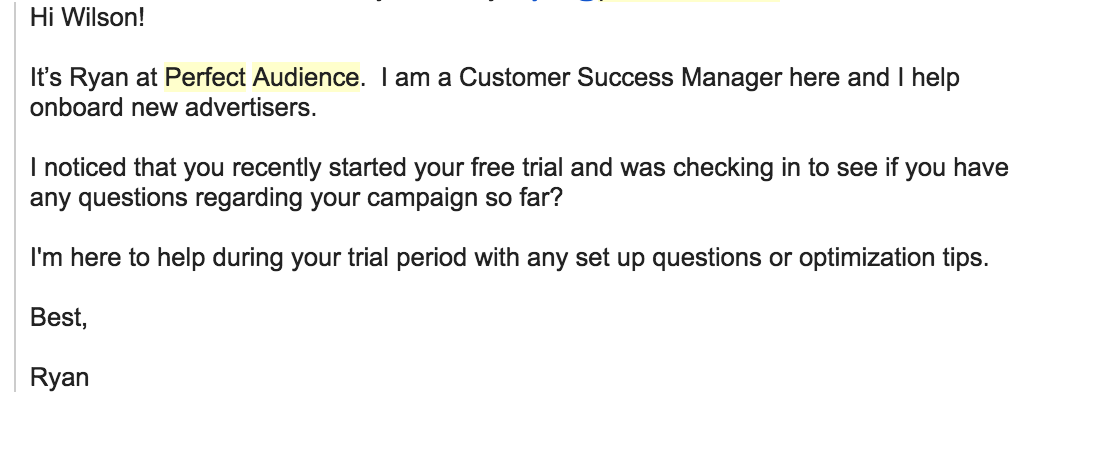
This is an awesome way to start a conversation with your audience. Ryan did a good job capturing my attention and reminding me about Perfect Audience. I could have forgotten about it and used another retargeting service.
Ask Questions – Checking in like how Ryan is doing it works, but sometimes you still won’t receive a response. To achieve the best results, you should add a combination of things and that includes asking questions.
At YesInsights, we send an email to all users on the 6th day of their trial to see how they are doing and if they are running into any problems with creating surveys. Our email looks like this:
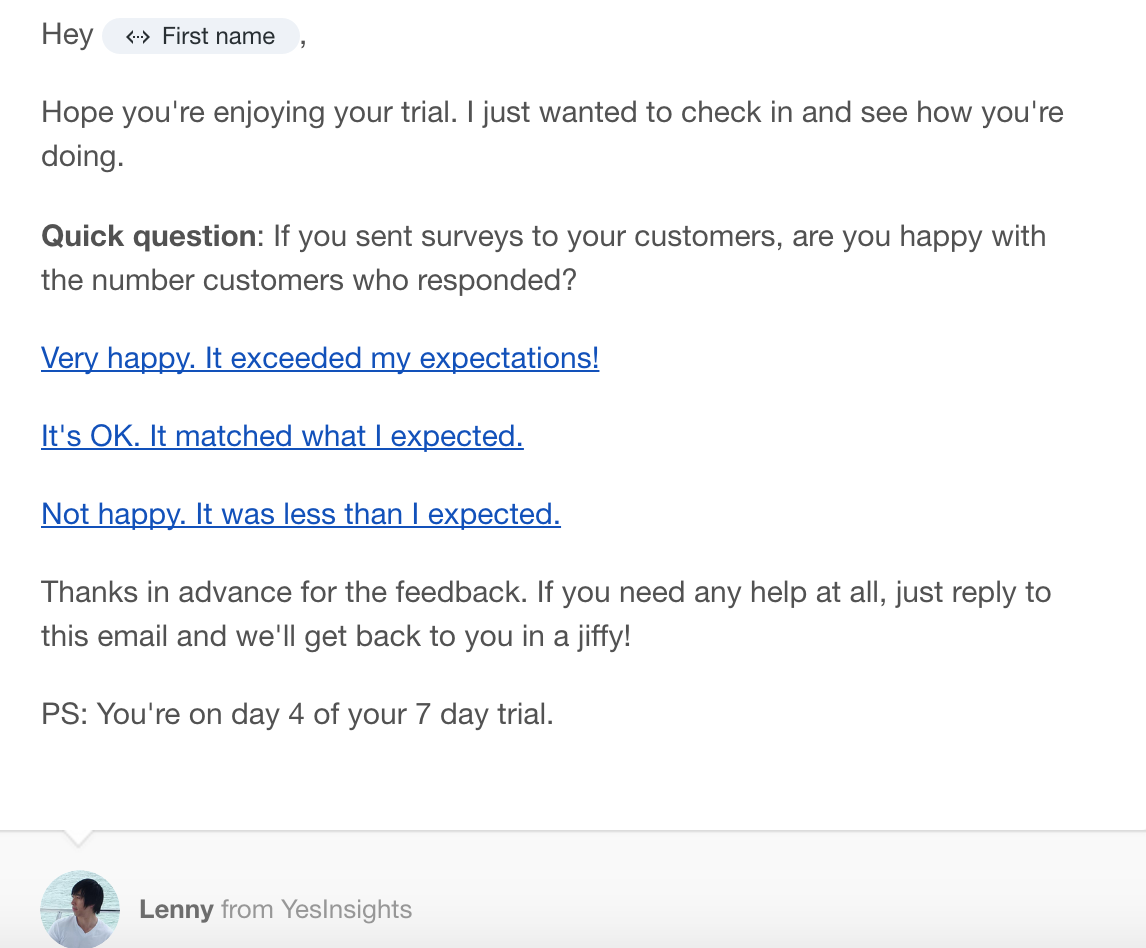
We have three goals in mind when sending out this email.
- We want to engage with our customers and to get a conversation going. The best way to do this is by asking a question. It’s pointless to send an email without a call to action. We do this by creating a one-click survey with our own tool. Out of all the users that open this email, 60% of them will respond by clicking on a response.
- We want actionable feedback from the user to see how we can improve our product. We take all the customer feedback seriously and it helps with retaining customers.
- Last, we want to remind the user that they signed up for our product. Like I mentioned above, I sign up for a lot of apps and forget about it. Checking in regularly will remind them that we’re still here!
In order to maximize results, you want to ask questions related to your product. We created the survey above by using our own survey tool and embedding it within Intercom, one of our most used integrations.
Provide more educational materials – When it comes to user retention and user engagement, it is vital that you keep your users educated. The more that they know about your product, the more likely they will stay long term and the more likely that they will trust you. You can do this by providing more use cases for your product or if your product is more complicated, you might want to send them some more technical documentation to help them out with setting things up.
On the second day of the trial, we send them an email with a blog post that we wrote that will give them more survey ideas. Here’s how it looks:
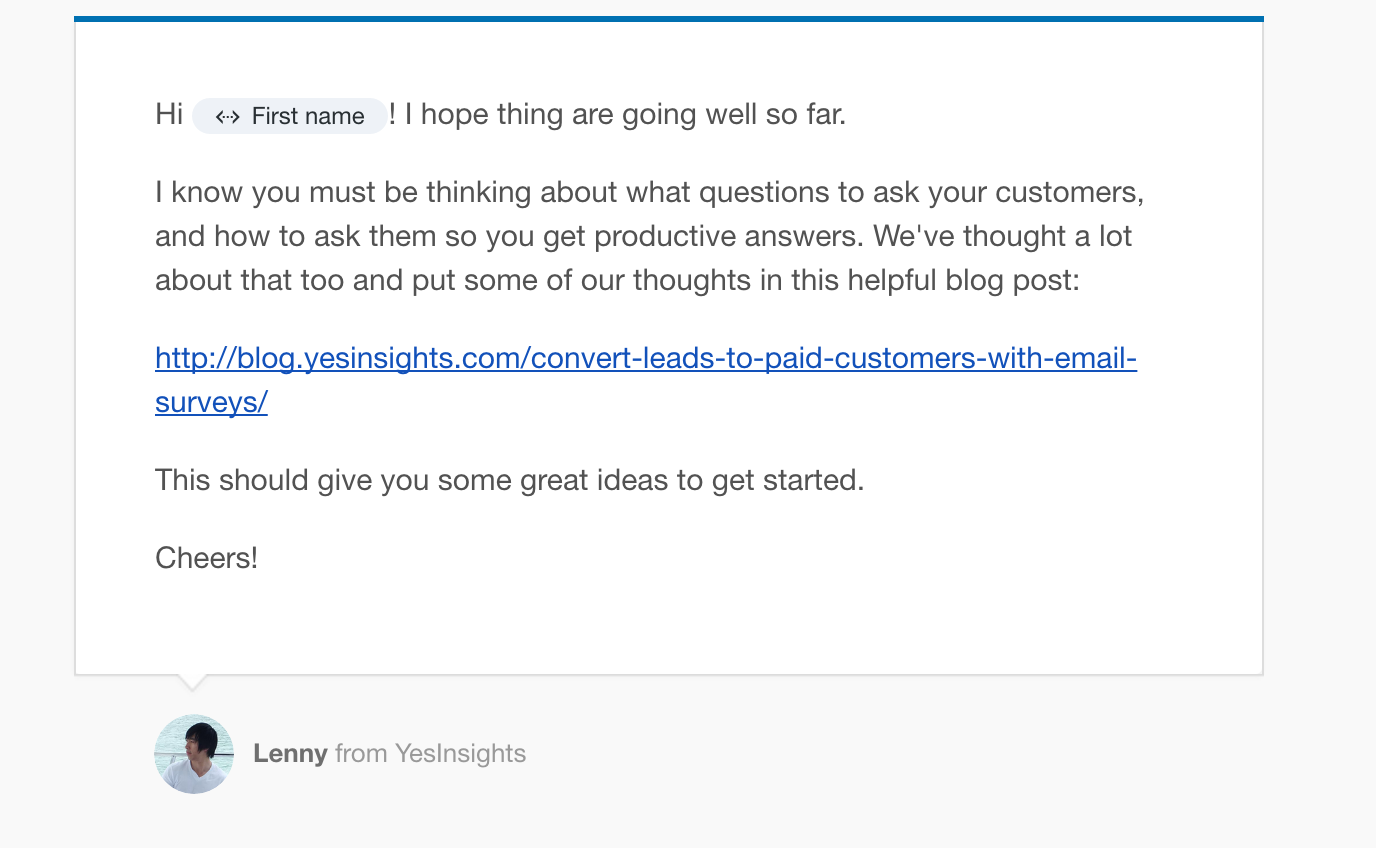
You can get creative with this depending on your product. It can be use cases, documentations, eBooks, white papers, handbooks, toolkit guides or anything else that will help your customers. It’s a great way to increase user retention.
User engagement is best when it has a personal touch to it, but you can get creative with the tactics. Providing additional education materials doesn’t necessarily have to come in the form of an eBook, white paper, content upgrades etc. It can come in a simple email where you offer more resources or help. Take a look at this email I received from Zapier recently after a week of signing up.
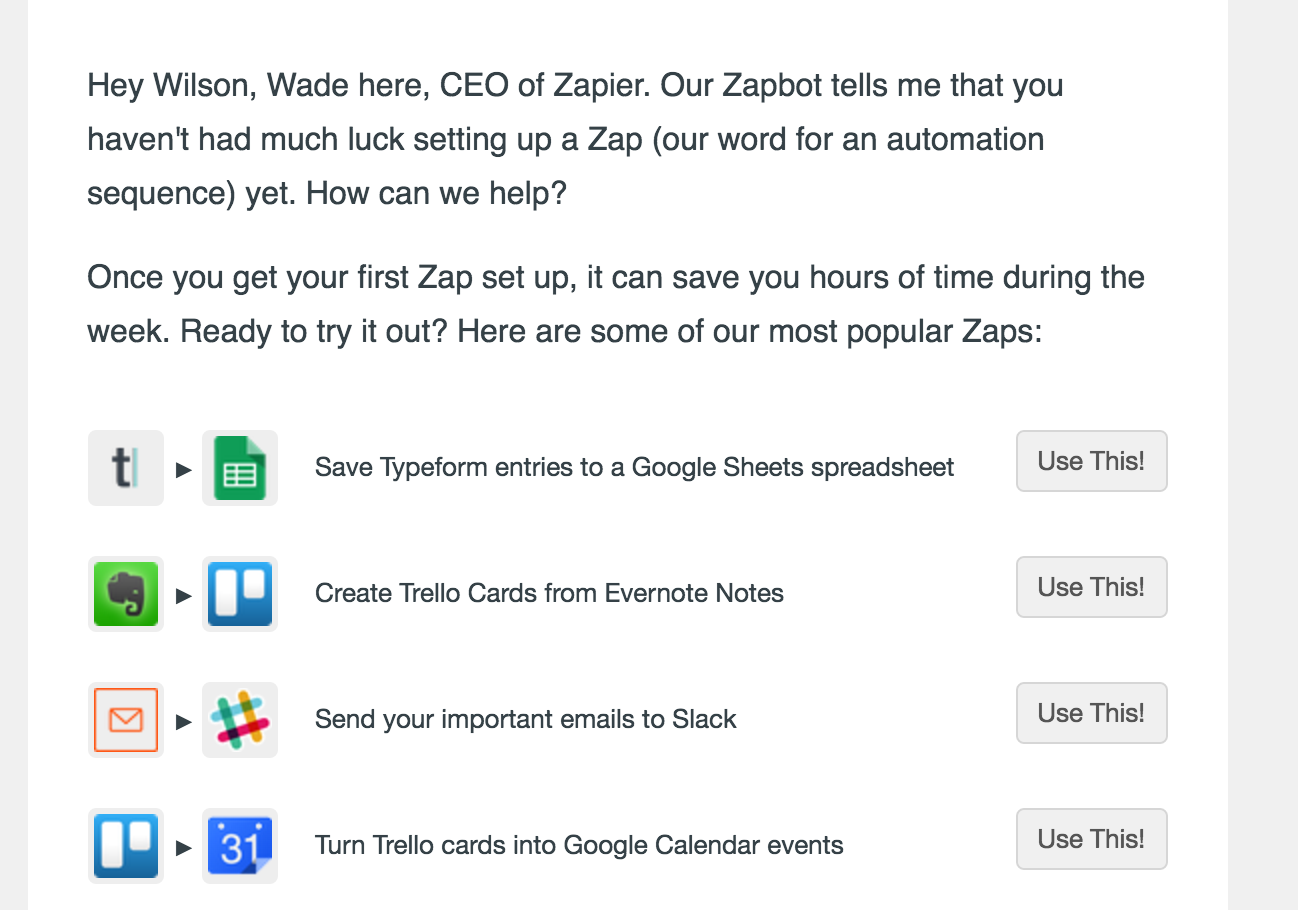
This worked for me because the first thing I did was click on the Trello card to Evernote use case. That led me back to their app.
3. Announce new feature updates
If you’ve been listening to your customers and have been getting their feedback, then you should have defined a pretty solid product roadmap. As a startup, you need to hustle harder than other people in your industry and pump out features that your customers want.
Users don’t notice when your product development slows down. However, if things go quiet for long enough, they’ll be easily distracted when a competitor releases a new feature, whether valuable or frivolous.
Take a look at StatusPage for example. They released a new feature where people can create “Private Status Page”. The first thing they did was release a blog article about it and then they sent out an email to all their users telling them about the feature. This is a great way to improve your user retention. The blog post went into details on why they decided to build that feature and the use cases for it. This is an excellent way to get your users excited about your product again.
You’ll be surprised on how delighted your customers will become when seeing regular updates.
4. Offering discount/referral codes and giveaways
When it comes to building a great product, we want to create as many “Double wins” as possible. A double win is where both you and the customer gain value over an offer. This could be a discount code for an annual upgrade or it can be a generous contest giveaway.
Take a look at this blog post by Baremetrics on how they generated an additional $14,000 in revenue by simply offering a discount for an annual upgrade. For nearly two years, the company tried to promote annual offers with a low conversion rate. Finally, they decided to try another format of the offering by sending an email like this:
Hey Sally! We’ve been testing out some new pricing models for Baremetrics and instead of our usual 2-months free for switching to annual pricing, we’re offering 3-months for free to a subset of customers.
Would you be interested in that?
Reply and let me know and I can add the right coupon to your account and make the switch to annual for you.
Thanks so much for being a part of Baremetrics. It means a lot to have folks like you on board. 🙂
Josh Pigford
Founder of Baremetrics
This resulted in $14,000 of extra revenue for their company in less than 7 days. This is exactly what I mean by a “double win”. When a customer is happy, they will stay around for a lot longer and a premium annual upgrade means that they will be around for at least another year.
Giveaways are also another great way to get people to come back to your app. A giveaway is another tactic you can use to build more “double wins”. You give away something and in exchange, you get a loyal and happy customer.
A great example of this is how Sujan Patel gave away free t-shirts with his company’s logo on it. This helped him generate an additional $500,000 in revenue. You can read about it here. What’s even more awesome about that strategy is that you’re essentially having one of your customers do the grunt work of brand marketing for you. The customer will be wearing your t-shirt and therefore will be helping grow your brand. At the same time, you have a happy and loyal customer which contributes directly to user retention.
5. Make a killer first impression
Every day a potential customer is seeing your interface for the very first time. It is extremely vital that you make a good first impression to delight your customer. There should be a couple of things that you should be doing in order to delight your customers on their first attempt to use your product.
- Explain how your app works or the story behind your idea.
- Provide them with resources on how to get started.
- Let them know that you’re here to help and that they can reach out anytime if they ever need help.
- Engage in an early conversion or send a warm greeting.
Web applications that do none of the above get the exact behavior that they are designed for. The users will log out and most likely never return.
Here’s what our welcome message looks like:
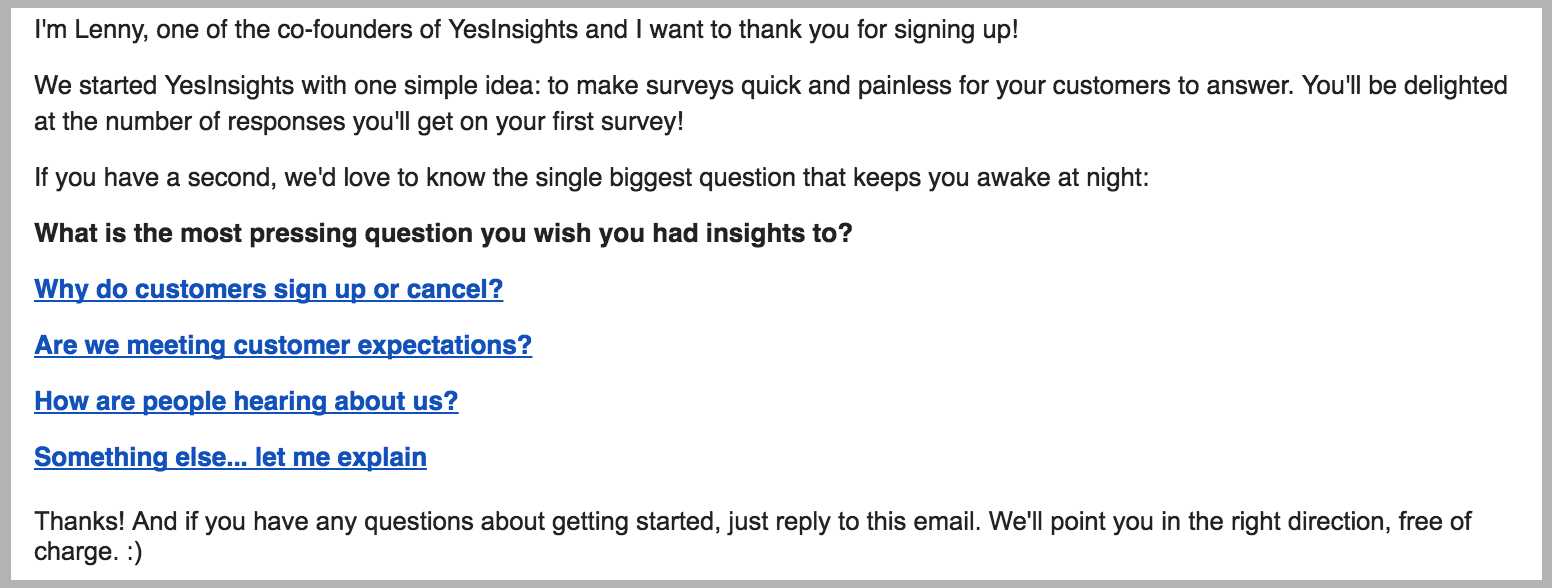
We send this through Intercom and use our own inline surveys to start the user engagement process as early as possible.
The first thing we do is give a brief introduction of ourselves. We give them a quick story behind our app and the reason behind why we built in. Think about the last time you met someone at an event. What happens after you guys greet each other? The first thing that happens after the greeting is usually a brief introduction of what both of you guys do. Neil Patel talks about the importance of storytelling in his online marketing guide. Keep the story short, but make sure it hits the point.
The best retention practices start with a solid foundation. Building a solid foundation and tweaking things along your journey will help you improve the user retention rate of your product. Remember, user retention goes beyond just collecting an email or getting a sign-up. User retention is the job of everyone on the team and not the responsibility of just one individual or department. Everyone has to contribute to it.
If you’re looking for the easiest way to get customer feedback across all platforms that can help with user engagement, user retention, growth, and product success, sign up for our free trial and give us a try! We’ll delight you 🙂

